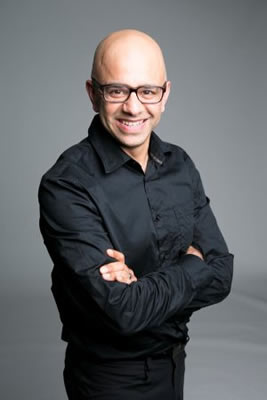The Inevitable Disruption of Audio

I love radio. After a grounding in classical marketing at Unilever, I took a marketing role at Capital Radio in London where I relaunched the brand, created a market segmentation and marketed events for 100,000 music fans. It was fabulous just being surrounded by music and the talent that created and presented it.
It was in 2000 whilst working at Capital Radio that I came across radio websites. In those days, websites were an extension to the radio station. A lot has changed in the following 16 years.
In 2016, music fans in Australia and across the world have so many ways to access music based content. Whilst traditional radio is still significant, the growth has come from new platforms that include streaming, podcasting and listening apps.
Just last week I was emailed by the chairman of Shazam. As a former marketing director, I was sent a copy of their press release announcing the 1 billionth app downloaded by music fans. That’s a ground-breaking milestone for the mobile music engagement brand by any measure.
During my time at Southern Cross Austereo through 2015 and earlier this year, we had an aggressive plan to increase consumption of radio-based audio across multiple platforms. We weren’t alone – all the radio stations have apps which play a growing role in consumption and engagement and just last week, the Australian radio industry announced the launch of its very own listening app, RadioApp, with some 250 stations on it. SCA also made acquisitions like Authentic and partnered with podcasting platforms like Omny because they saw the commercial value of digital platforms and the importance of those platforms for engaging younger listeners.
Go to Nova Entertainment’s website and you’ll see their CEO, Cathy O’Connor states their mission, ‘…to create content that is loved and shared by audiences, wherever they are’. Their mission isn’t to create radio. It’s about understanding the importance of audio content creation and distribution.
Earlier this year, I spent some time with one of the major labels here and they shared data that showed the shift from downloads to streaming as their primary commercial driver. Anyone who studies audio has to take the time to appreciate the audio value chain. Labels are a fundamental part of the audio ecosystem and they are now making their money from streaming. Take a look at Universal Music Groups 2015 annual revenues and you’ll see streaming grew to 24% by the end of the year whilst physical product fell again to 38% and downloads fell to 18%.
They aren’t alone. In the Wall Street Journal Tech and Media Outlook 2016 you’ll see a section on streaming. The data is compelling and clearly shows the future. In the USA, digital takes up a third of all listening. Whilst radio is 83% of audio consumption for the 34-55 group, it is just 45% for 13-17 year olds. I would expect an analysis of the demographic data in Australia and any other musically developed country will show that the youth are using their mobile device as their primary platform for audio consumption. And that means they’re using a range of services from radio to the pure play streamers that are Spotify and Pandora.
This will only evolve further given the announcement made by both Apple and Google Android earlier this year that all major car manufacturers will feature Apple Car Play and Google Auto. Given that a third of all listening in Australia is done in car, it’s clear that the future of all car listening will be driven by the smartphone, not the radio. All the major radio players, as well as Spotify and Pandora are all very aware of what lies ahead and they are all building plans to be part of the digital car.
So whilst traditional radio remains dominant, all the new platforms are growing fast in Australia. Spotify and Pandora have seen significant growth, while organisations like Mamamia have built out formidable podcasting businesses. They aren’t alone.
Edison Research in the USA shows podcasting will move from three billion hours in 2008 to an estimated 15 billion hours by 2020 and at the recent IAB MIXX conference in New York, NPR referenced a doubling in podcast revenues, ESPN and Authentic were championing podcasting; and WBEZ ’s Serial was noted as having been downloaded 80 million times by February 2016.
The evidence is clear cut. Digital platforms are transforming the way audio is being consumed and that’s a good thing for marketers. The shift to digital audio will provide new opportunities that won’t just be about audience size, but also the ability to personalise and target advertising based on behavioural data rather than simply research.
The IAB has an Audio Council set up specifically to help agencies and marketers understand the audio landscape in 2016. Interested parties might like to check out the just launched industry survey. In true radio style there are some great prizes for getting involved.
INXS was pretty close to the mark when they sang “I got a new sensation; in perfect moments; impossible to refuse.” I do love radio but there is no getting away from the fact that digital has begun to change how radio is consumed both as content and platform and that means agencies, publishers and marketers alike have some amazing new opportunities ahead of them. So let’s work together collaboratively to help marketers navigate these new waters.
*Midroll, IAB, US Census, Edison Research, Activate Analysis
 About: Vijay
About: Vijay
Vijay Solanki was SCA’s Chief Digital Officer and is now CEO of IAB. The Interactive Advertising Bureau (IAB) is the peak trade association for online advertising in Australia.


